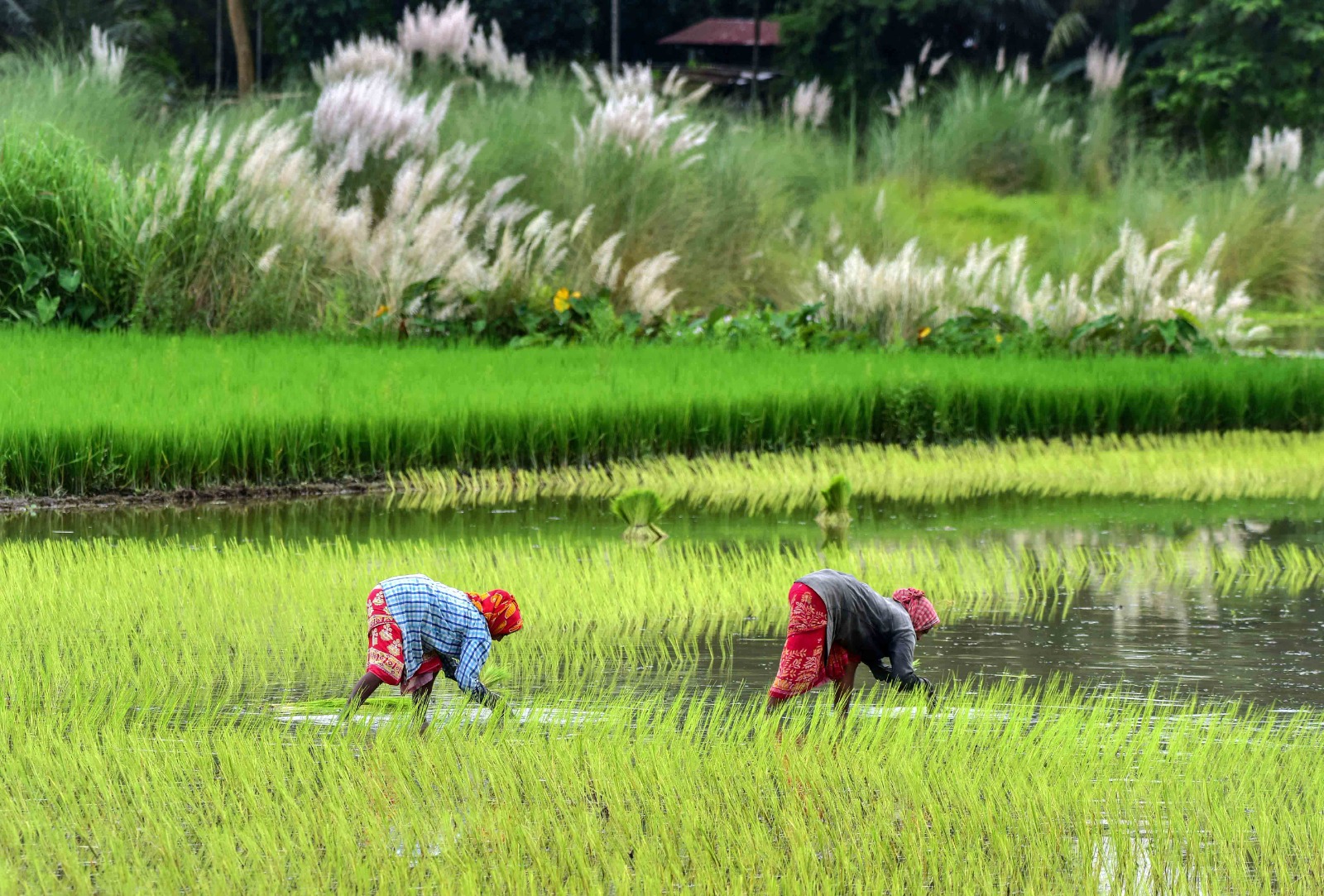Rural Relief: Inflation for Agricultural and Rural Workers Hits Six-Month Low
New Delhi, May 20 (TheTrendingPeople): In a welcome development for millions of India's rural poor, inflation for agricultural and rural labourers eased significantly in April 2025, according to data released by the Ministry of Labour and Employment on Tuesday. The latest figures bring much-needed financial relief to vulnerable households still recovering from the economic aftershocks of global disruptions and volatile food prices.
The Consumer Price Index for Agricultural Labourers (CPI-AL) fell to 3.48% in April, while the Consumer Price Index for Rural Labourers (CPI-RL) stood at 3.53% — both down sharply from 7.03% and 6.96%, respectively, recorded in April 2024.
On a month-to-month basis as well, the drop was notable. March 2025 had recorded inflation at 3.73% for CPI-AL and 3.86% for CPI-RL, reflecting a consistent downward trajectory for the past six months.
A Breather for India's Rural Backbone
The sustained decline in inflation rates means higher purchasing power for India's farm and rural workforce, the segment most impacted by fluctuations in essential commodities.
“This is a major relief for rural households that are often the first victims of price shocks and the last to recover,” an official from the Labour Ministry told TheTrendingPeople.com.
With prices easing across essential food items, households in rural India can now afford a more diversified consumption basket — improving nutrition, lifestyle, and basic well-being.
Easing Food Prices Behind the Fall
One of the major drivers of this rural inflation dip is the sharp decline in food prices. Nationally, retail inflation dropped to 3.16% in April, compared to 3.34% in March, marking its lowest level since July 2019.
Food inflation, which forms nearly 50% of the overall CPI basket, fell steeply to 1.78% in April from 2.69% in March. This drop has played a significant role in cooling inflation for rural workers, who spend a large portion of their income on food.
RBI’s Monetary Policy Stance Vindicated
The decline in rural inflation comes at a time when the Reserve Bank of India (RBI) has been pursuing a soft monetary policy, aimed at supporting economic growth without risking inflationary spikes.
The fact that inflation has remained below RBI’s 4% medium-term target for three consecutive months provides a strong signal for potential interest rate cuts in the upcoming policy reviews.
“The outlook for food inflation has turned decisively positive,” said RBI Governor Sanjay Malhotra during the last monetary policy meeting. The central bank has revised its inflation forecast for 2025–26 downward to 4% from 4.2%.
Strong Harvests Improve Rural Outlook
Much of the optimism in the inflation data is backed by solid agricultural fundamentals. The second advance estimates released earlier this year indicate a record wheat harvest and higher production of key pulses compared to last year.
Combined with robust kharif arrivals, these gains have reduced supply-side stress and added confidence to India’s food security scenario.
The uncertainties around rabi crops — which had earlier raised concerns over price surges — have now mostly abated, reinforcing hopes of continued price stability through the summer months.
What It Means for Policy and the Public
With inflation trending downward, especially in rural areas, the government can now focus on increasing rural employment and consumption without risking runaway inflation. Public sector schemes like MNREGA and Ayushman Bharat may also see improved efficiency as real incomes rise and out-of-pocket health expenditures decline.
For policymakers, the consistent decline affirms that price stability and growth are not mutually exclusive, especially when supported by smart agricultural planning, targeted subsidies, and active monetary management.
Bottom Line
India’s rural population — long at the receiving end of economic pain from high inflation — is finally witnessing some fiscal breathing room. As food prices ease and harvests remain strong, the rural inflation slowdown in April is not just a data point, but a sign of broader economic healing.

